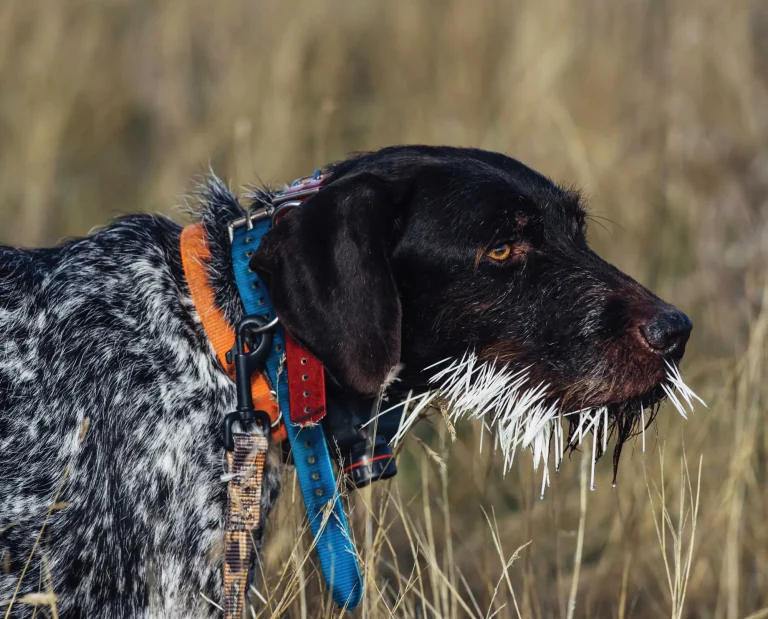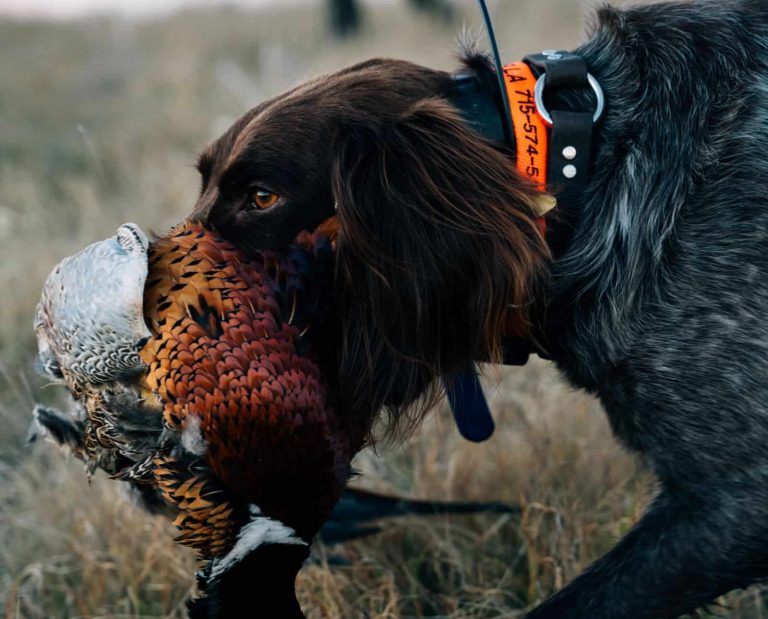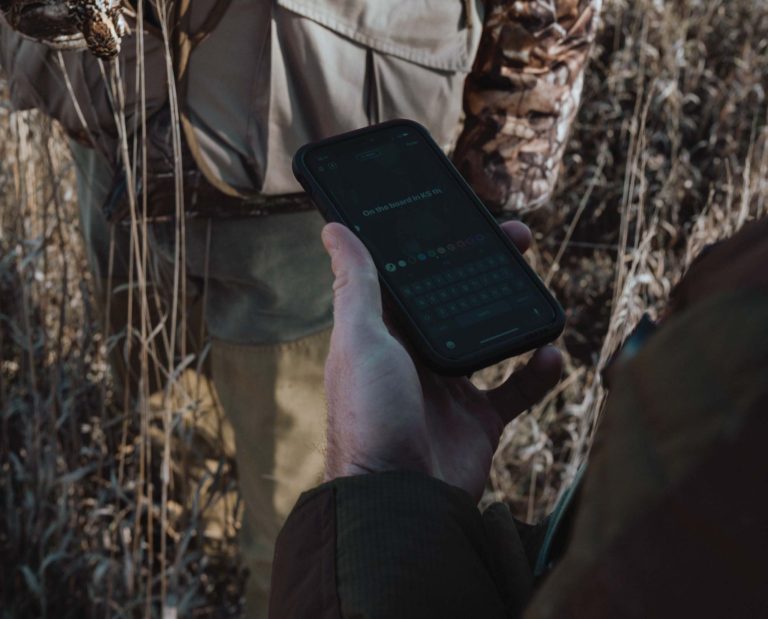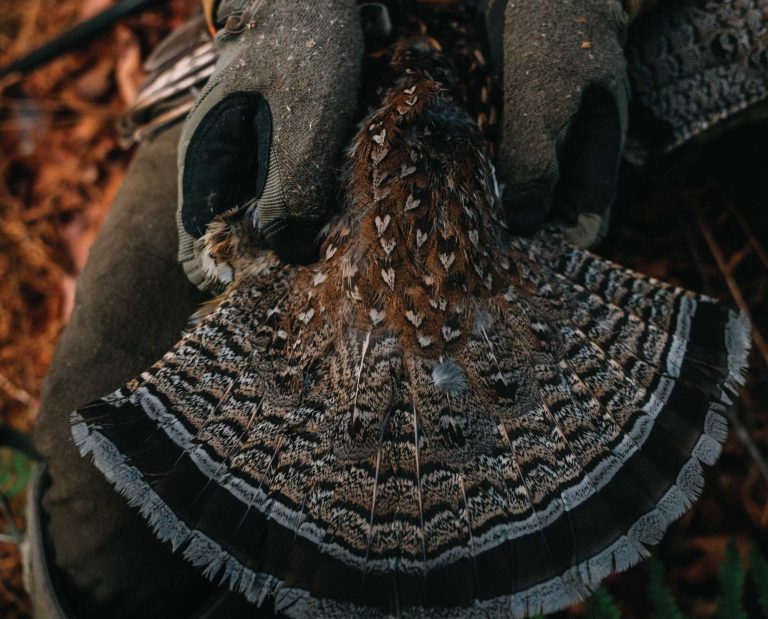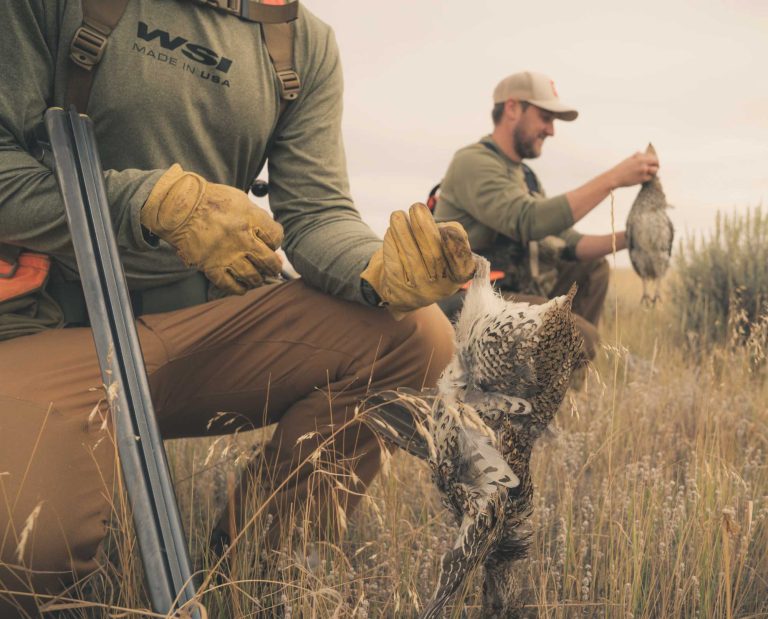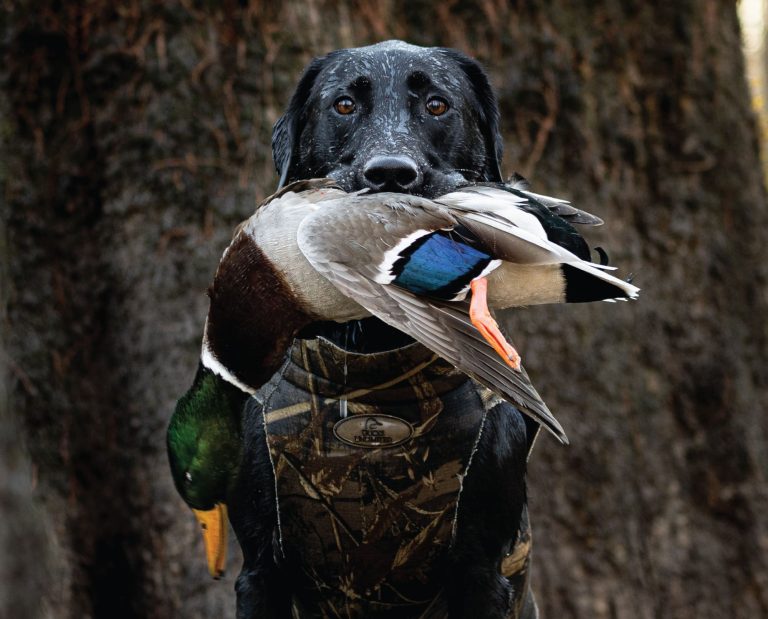NAVHDA Natural Ability Test – A Complete Overview
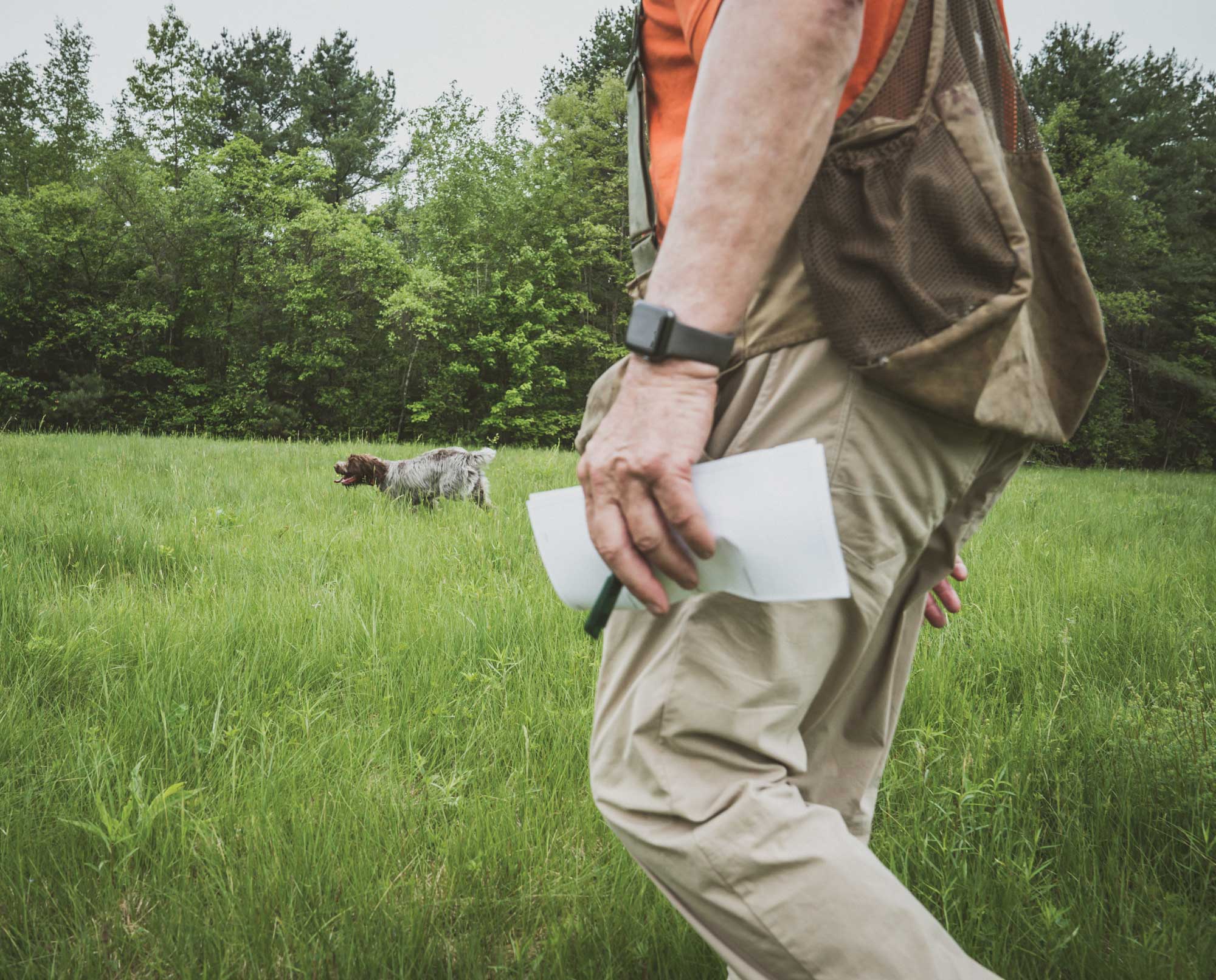
A look at what the NAVHDA natural ability test is and how it matters to your dog
Often when purchasing a pup from a breeder within the contract is a list of commitments the owner is agreeing to. These can range anywhere from what kind of fencing used at your home to completing hunt tests. If your pup came from a North American Versatile Hunting Dog Association (NAVHDA) breeder, chances are good you’re asked to run your dog in a Natural Ability Test.
What is the NAVHDA natural ability test?
In short, the NAVHDA Natural Ability Test (NA Test) judges a young dog’s natural abilities as a hunting companion. But that can be very misleading, especially to first-time handlers. Although the test is looking for natural abilities, it does not mean a handler and his dog should enter the test with little to no preparation.
All NAVHDA tests are conducted in environments that reflect actual hunting conditions and situations and test all characteristics required of a good versatile dog. These include: use of nose, field search, pointing, desire to work, cooperation, and physical attributes.
READ: Aims Programs Test Rules
To be eligible for the Natural Ability Test, dogs must be 16 months old or younger. If space is available, dogs that are more than 16 months of age are allowed to test in NA for evaluation only.
How to participate in a natural ability test
All dogs that participate in NAVHDA testing, including the Natural Ability test, must be registered through NAVHDA. In addition, all owners and handlers of dogs entered in a NAVHDA test must be members of NAVHDA International.
There are currently 95 Chapters of NAVHDA located throughout the U.S. and Canada, each holding their own tests throughout the year. To register for a test, contact the Test Secretary at the chapter you wish to test at. They will be able to provide all the details on testing at their chapter, including location, spots available, and cost. If there is a particular chapter you want to test, be sure to get your paperwork in early as spots tend to fill up quick.
How natural ability tests are scored
The NA test is comprised of four phases, however the sequence in which the phases take place can vary depending on the grounds, weather, and at the judges’ discretion. But, before we break down the different stages of the NA test, let’s take a look at what the judges will be looking for. One of the big things to note about NAVHDA testing is that all the dogs are judged against a standard. This means no one is competing against one another during the tests, there are no “First place,” “Second Place” or “Last Place.” The Natural Ability test is scored out of a maximum 112 points. During tests all dogs are evaluated by a team of three judges (and up to two apprentice judges).
| TEST | Index Number | Maximum Points Attainable | Prize 1 | Prize 2 | Prize 3 |
| Nose | 6 | 24 | 24 (4) | 18 (3) | 18 (3) |
| Search | 5 | 20 | 20 (4) | 15 (3) | 10 (2) |
| Water | 5 | 20 | 15 (3) | 15 (3) | 10 (2) |
| Pointing | 4 | 16 | 12 (3) | 12 (3) | 8 (2) |
| Tracking | 2 | 8 | 6 (4) | 4 (2) | 2 (1) |
| Desire to Work | 4 | 16 | 16 (4) | 12 (3) | 8 (2) |
| Cooperation | 2 | 8 | 6 (3) | 4 (2) | 2 (1) |
| Total | 112 | 99 | 80 | 58 |
Natural ability test phases
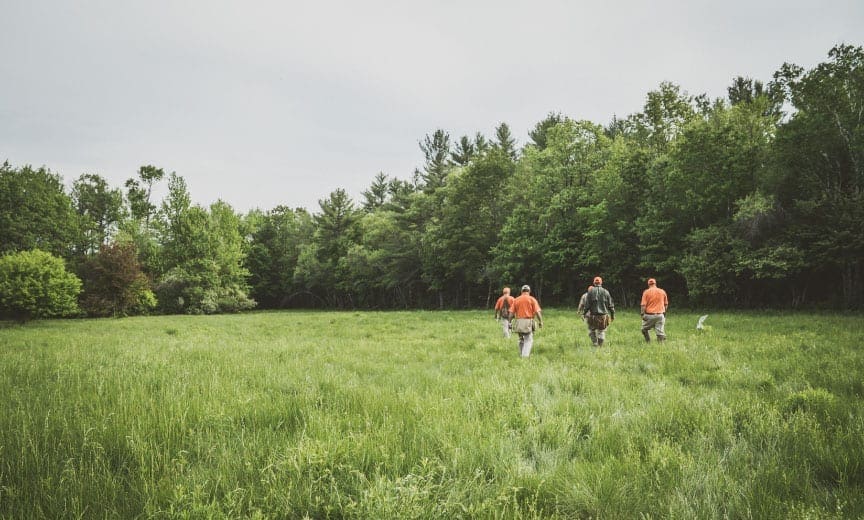
Field phase
During this time the dog is hunted in cover where the presence of game has been assured by releasing game birds. While the puppy is out on its search, a gunner will shoot two blank shots at the direction of the judges to evaluate the dog on gun shyness. The dog can be marked as “not gun shy,” “gun shy” or “gun sensitive.” Each pup is hunted for a minimum of 20 minutes and is evaluated on:
- Use of Nose
- Search
- Pointing
- Desire
- Cooperation
- Gun Shyness
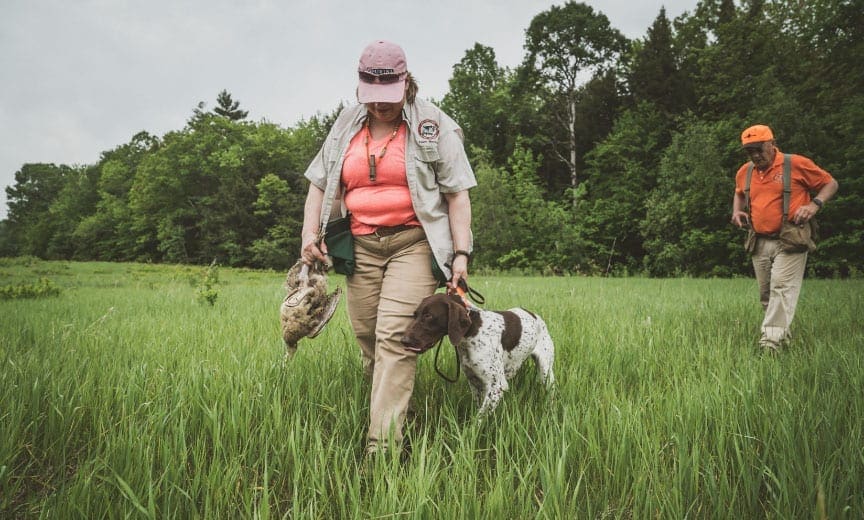
Tracking phase
A flightless running pheasant or chukar is released out of sight of both the dog and handler, however the handler does have the option to have the bird shown to the dog by a judge before the track begins. When the team gets to the judges, the dog is shown a pile of feathers and judges will indicate wind direction to the handler before the dog is given the opportunity to track the bird. The dog does not need to find the bird to receive a high score in this phase.
Each dog is judged on the following items:
- Use of Nose
- Tracking
- Desire to Work
- Cooperation
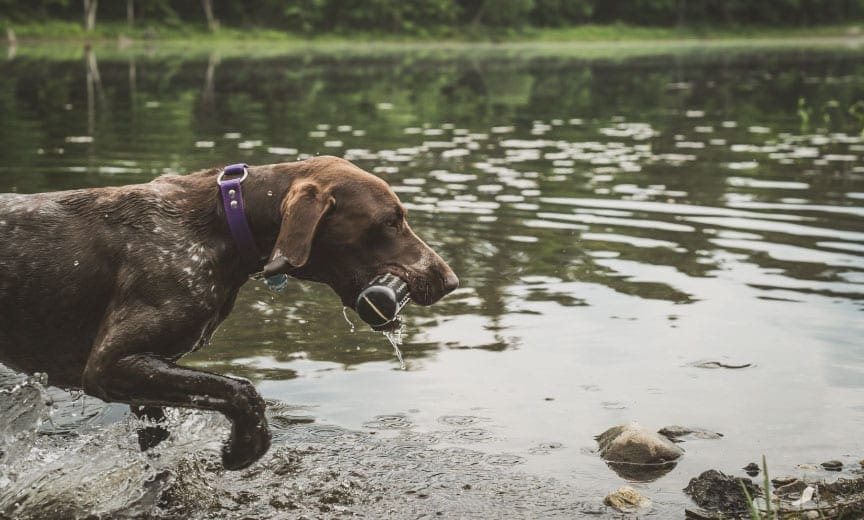
Water phase
The dog is tested for its willingness to swim. This part of the test takes place in a location that offers easy and gradual access to swimming-depth water. The handler is provided a collection of training bumpers that they can throw into the water to encourage the dog to swim. Judges want to see the dog swim at least twice during this phase. What is important to note here is that how the dog enters the water doesn’t really matter. A dog that leaps into the pond is judged the same as one that casually strolls in. What is important is that the dog displays desire and self-confidence to swim.
The following items are judged during the water test:
- Water Entry
- Desire to Work
- Cooperation
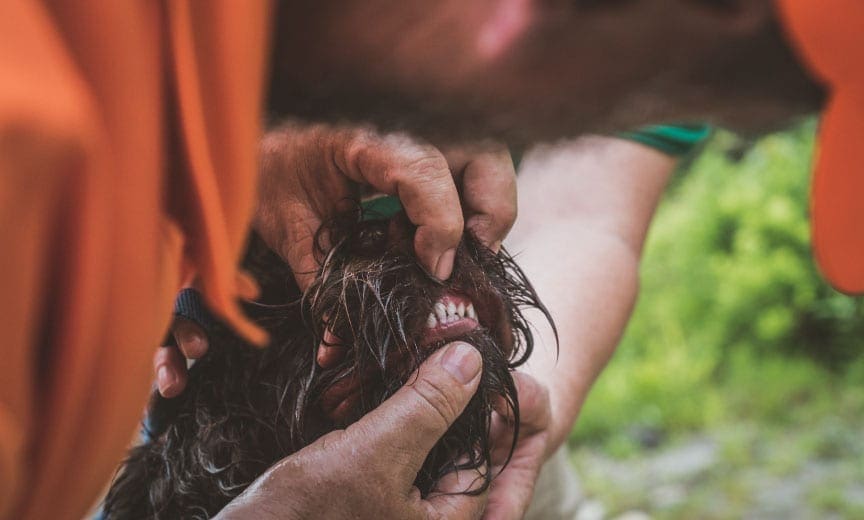
Judgment of physical characteristics
Usually after the water portion of the test, the judges will evaluate the dog’s physical characteristics. This usually entails the handlers keeping control of the pup while the judges check its teeth (note if any are missing), coat (density and harshness), and the dog’s temperament. Judges will also typically ask if the male dog has been neutered.
After all the phases of the test are completed, all that’s left is the waiting for scores to be read! Handlers and test volunteers gather round to hear the judges make any announcements, thank the volunteers, NAVHDA sponsors, and read the scores for each dog. It is always handy to bring a pen with you to tests so you can write your dog’s scores down. After receiving scores, judges will typically stick around for a period of time to discuss anything with the handlers. Keep in mind that the judges judge as a team so they will discuss scores as a team. This is also an opportunity to have the judges sign your dog’s pedigree if you have it with you.
Now that you know the basics of the Natural Ability Test in the NAVHDA system, you and your pup can count yourselves a bit more prepared to take part. However, the best way to get a feel for the tests is to go out and observe, or better yet, volunteer at a local chapter and get hands-on experience!



